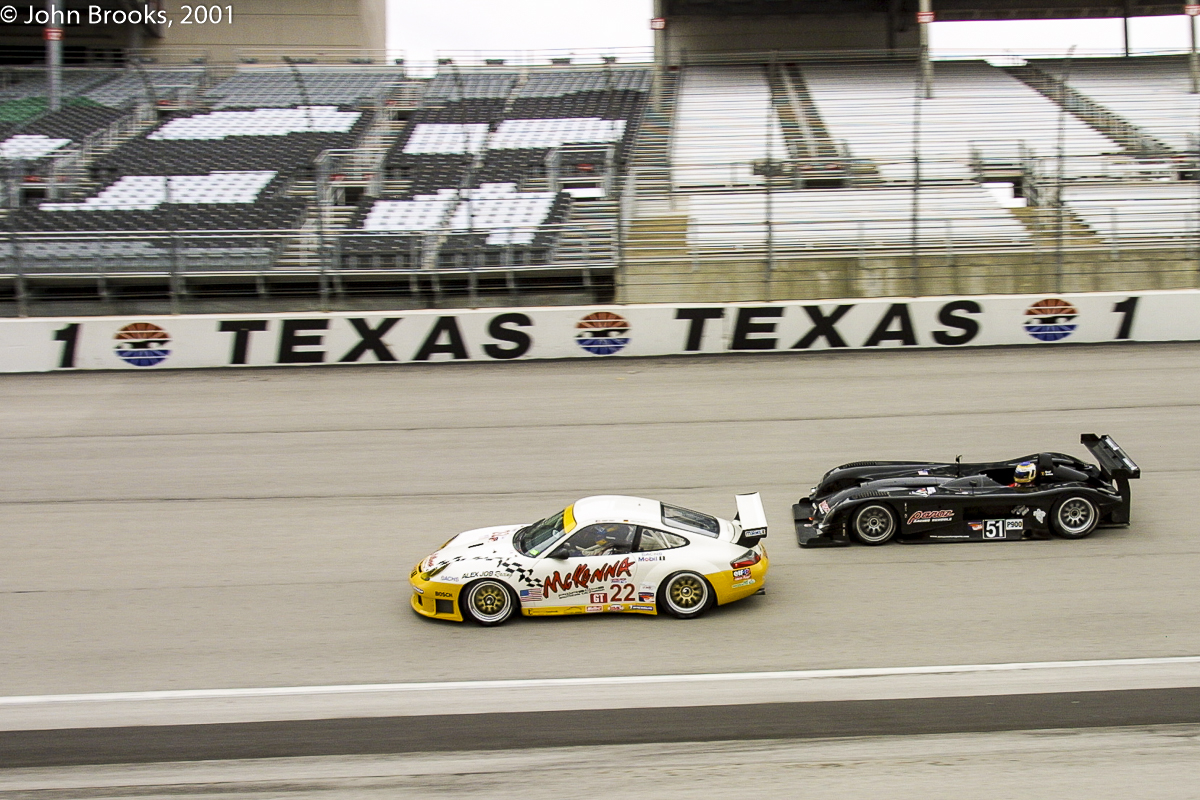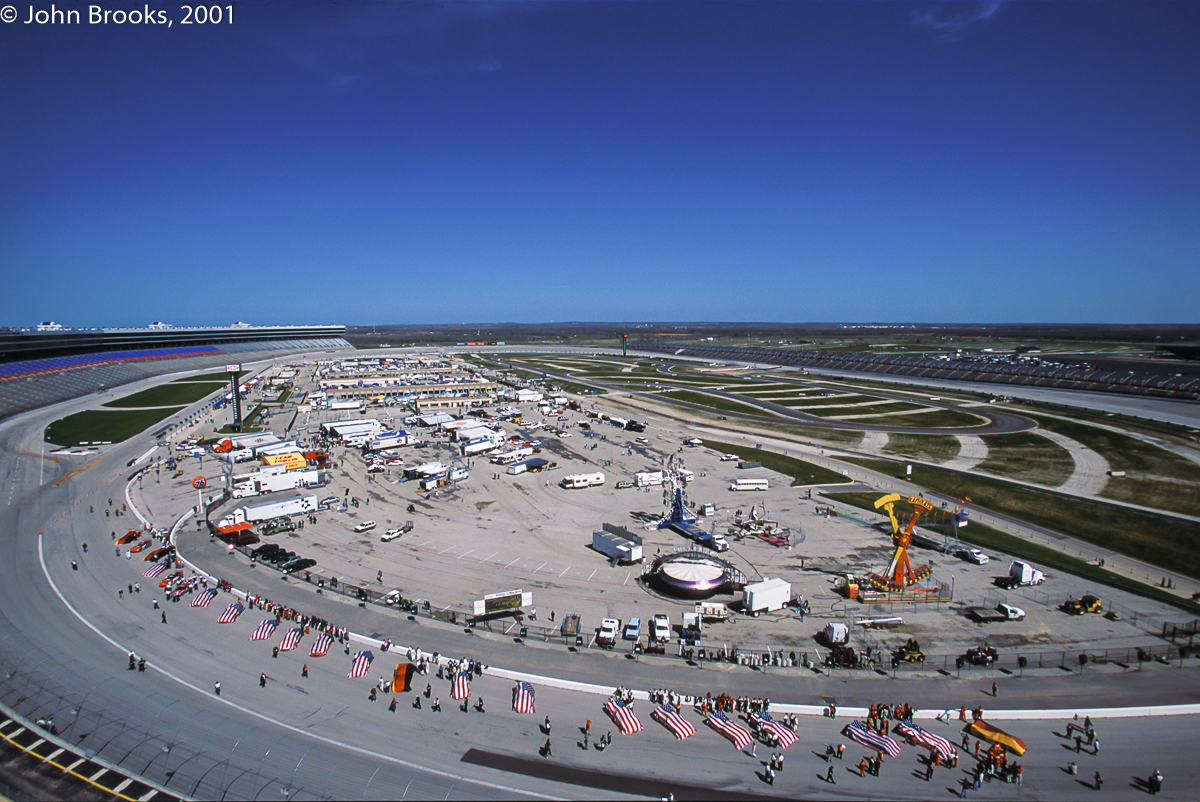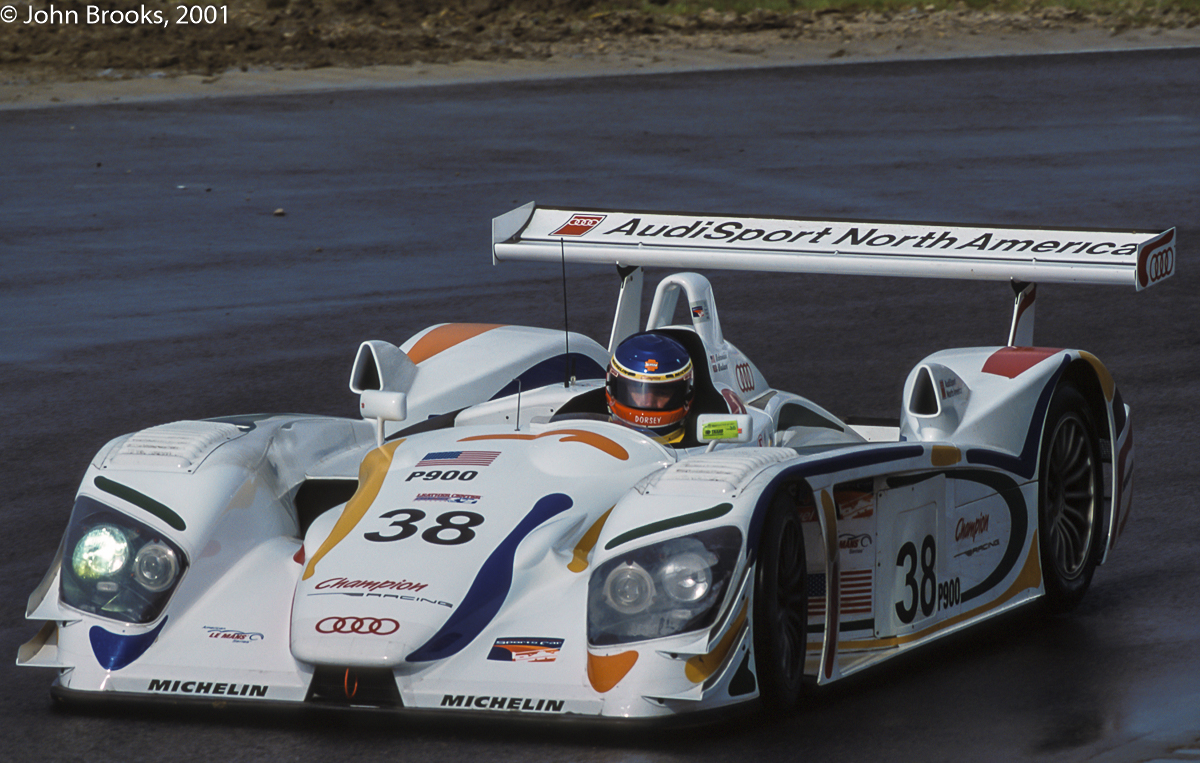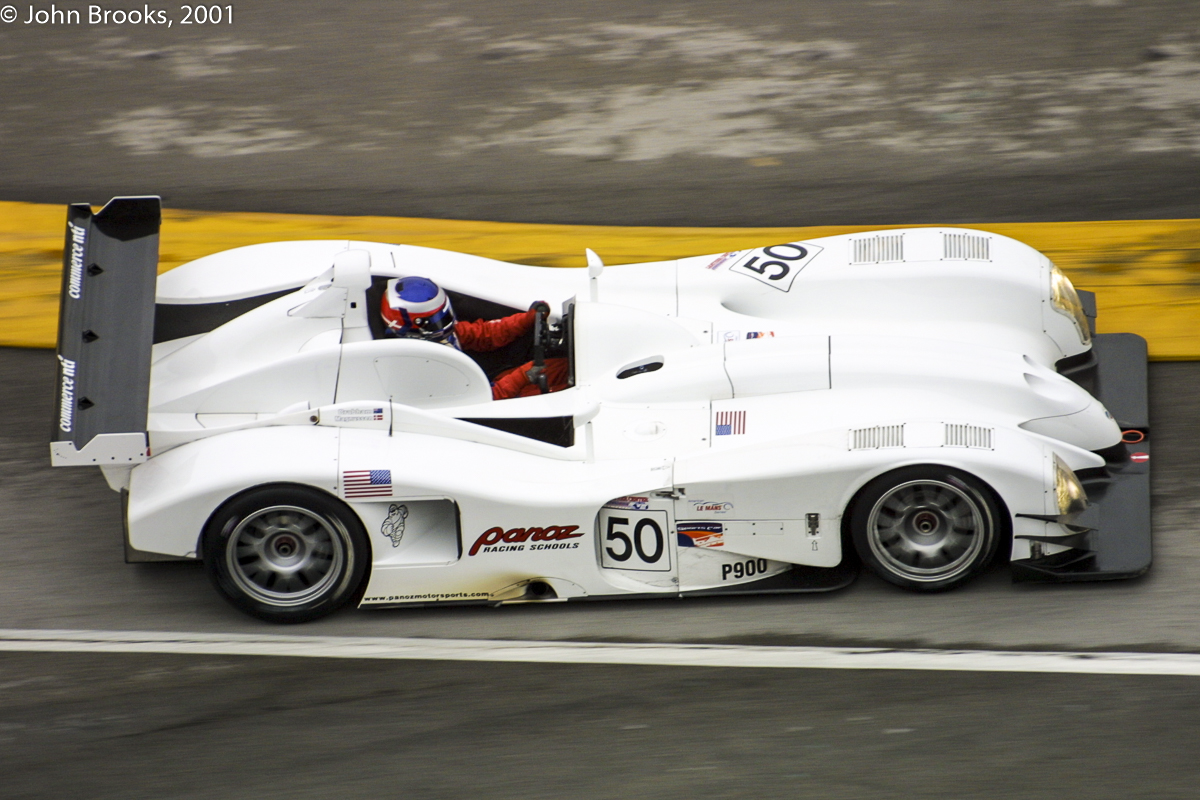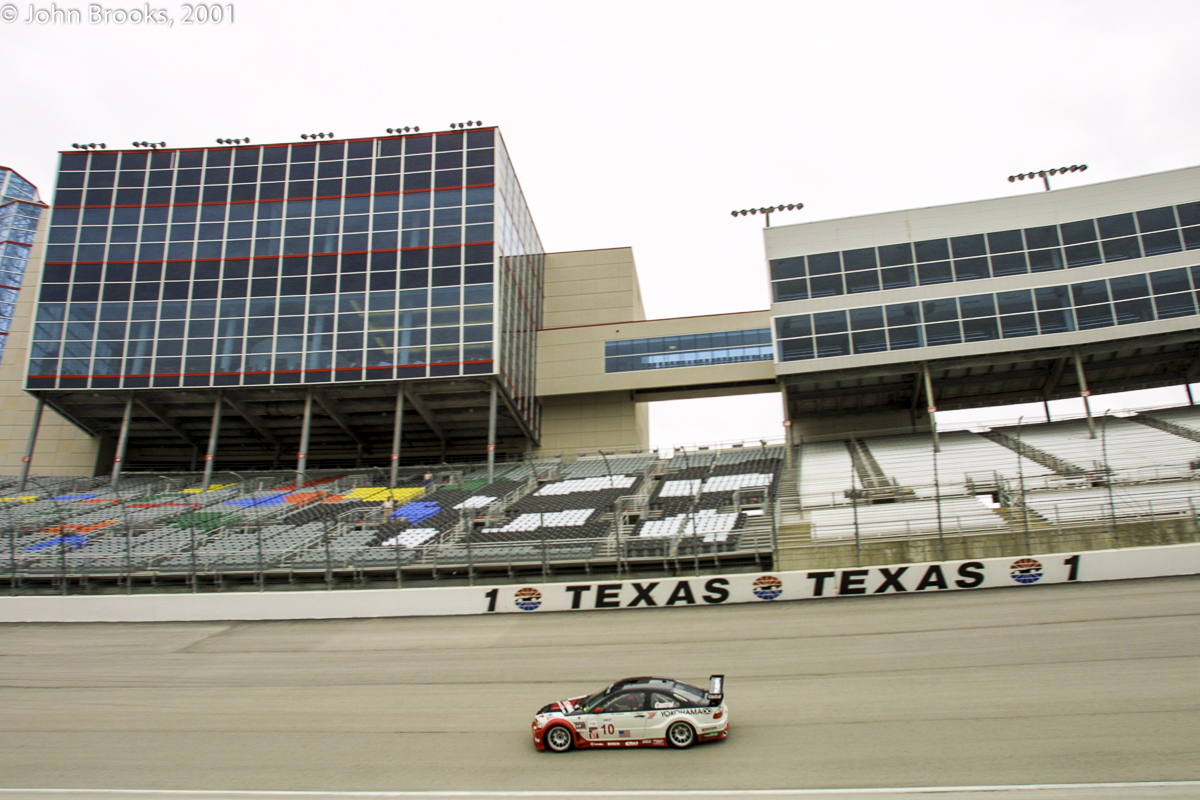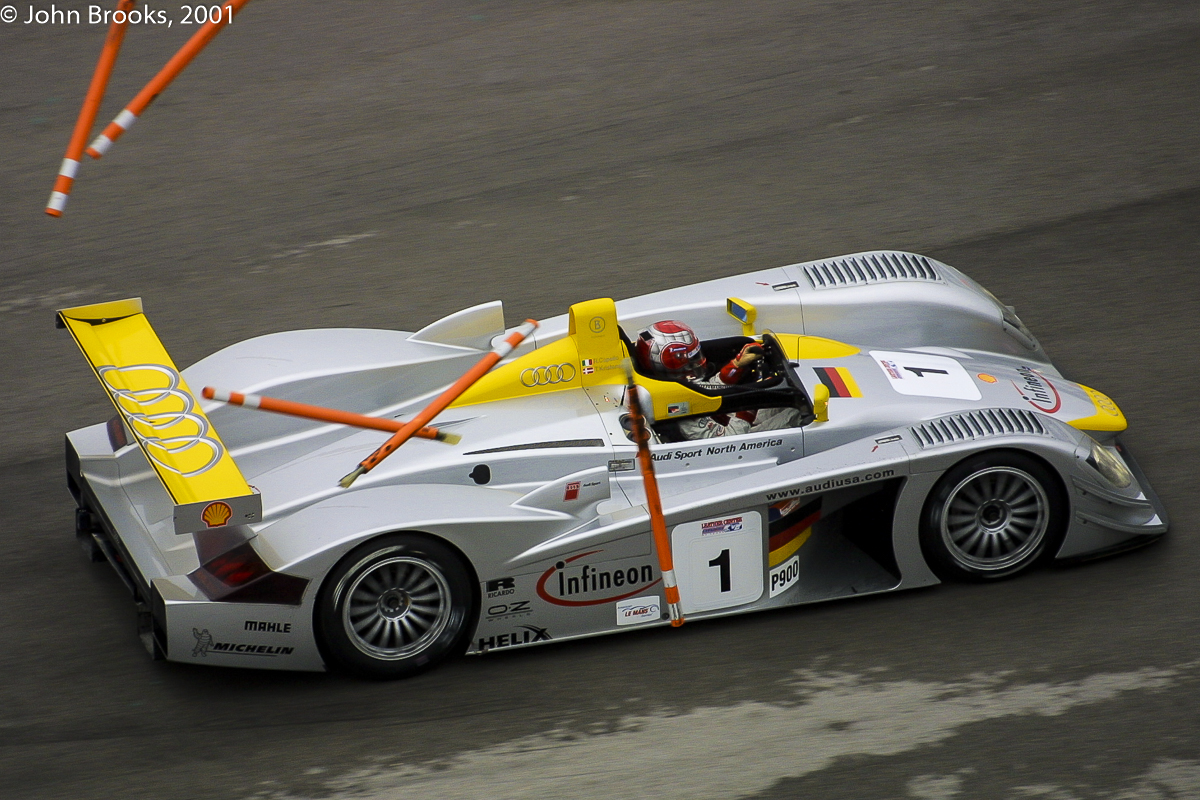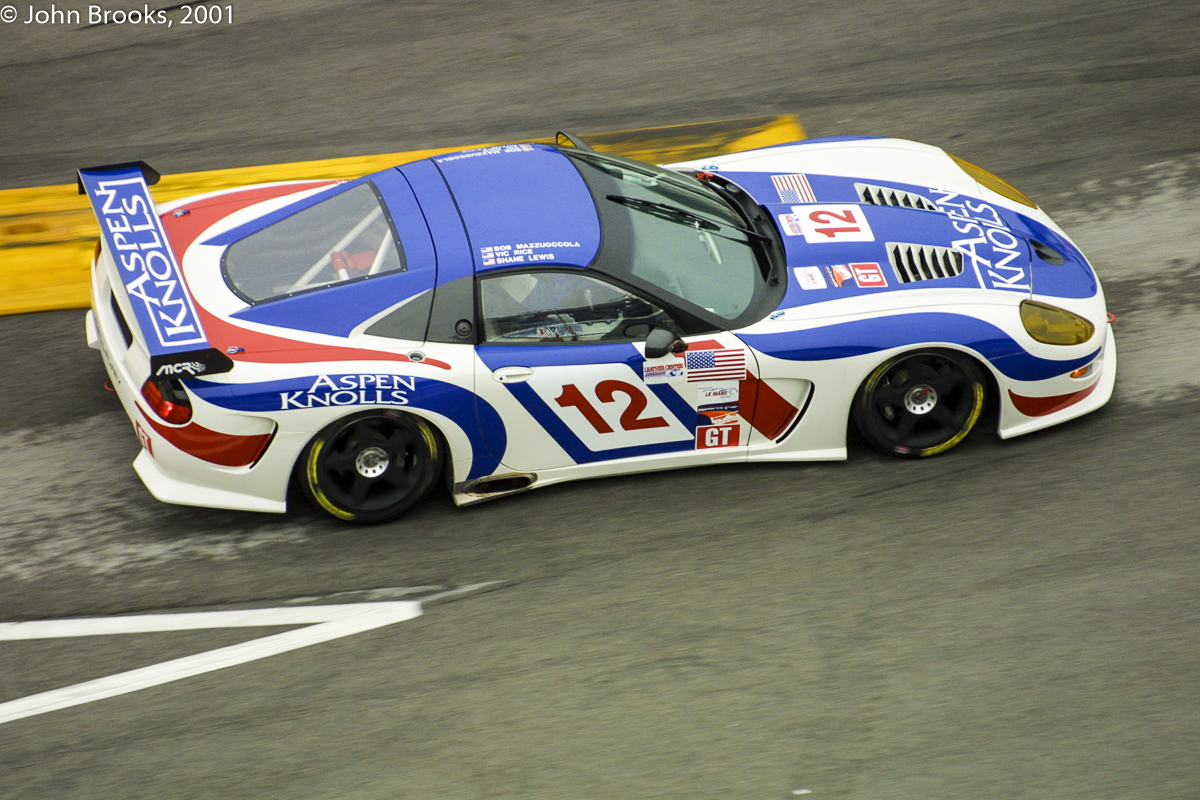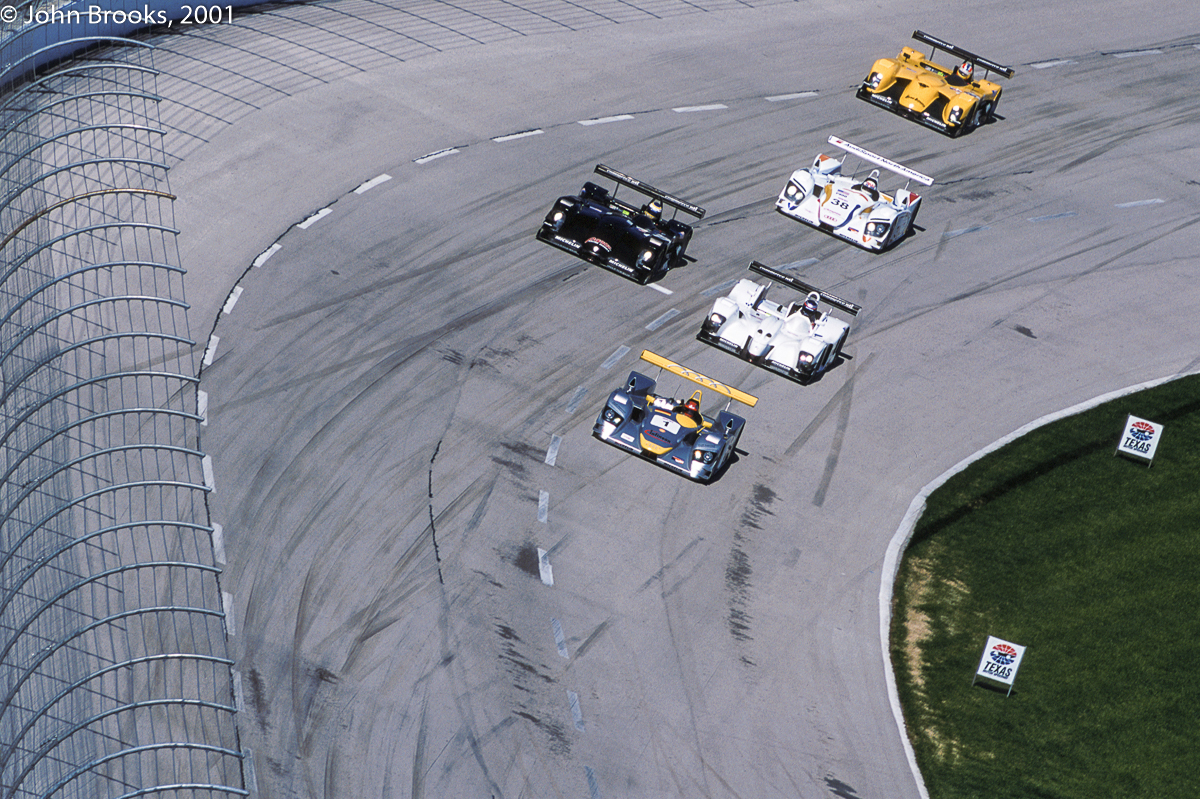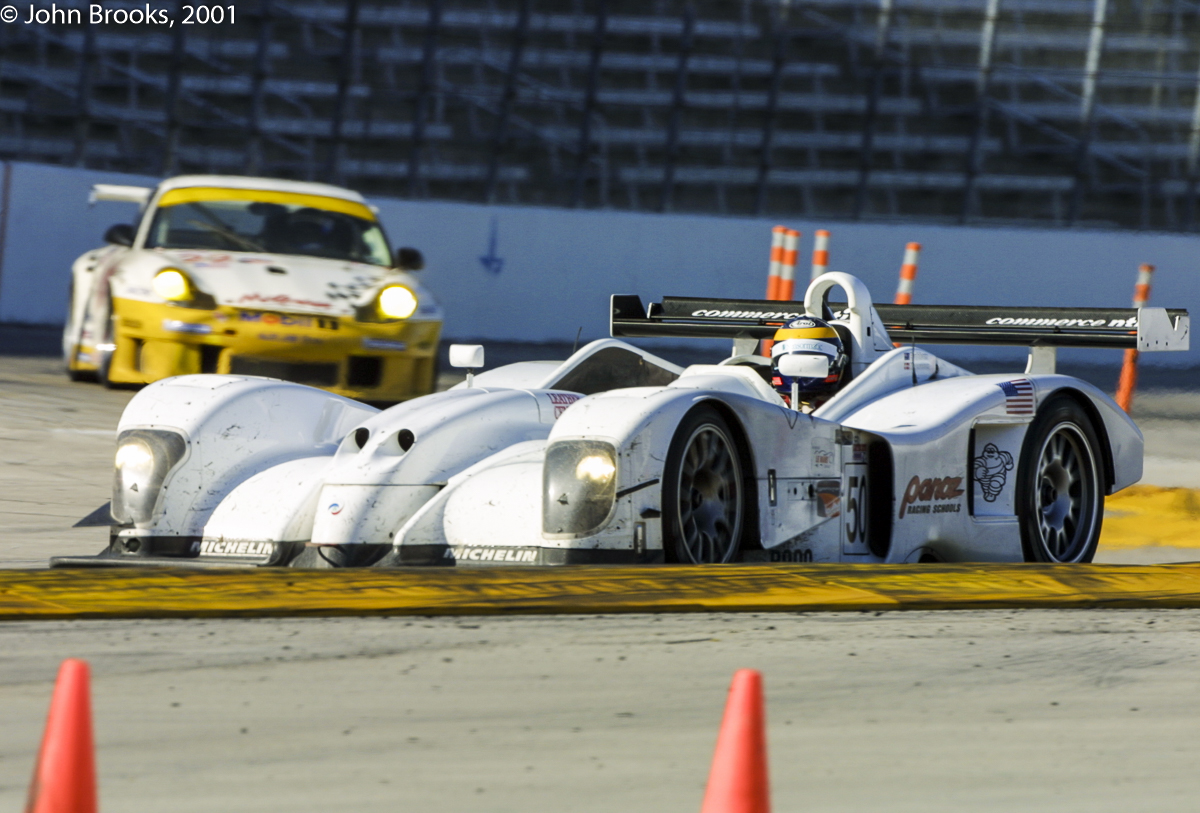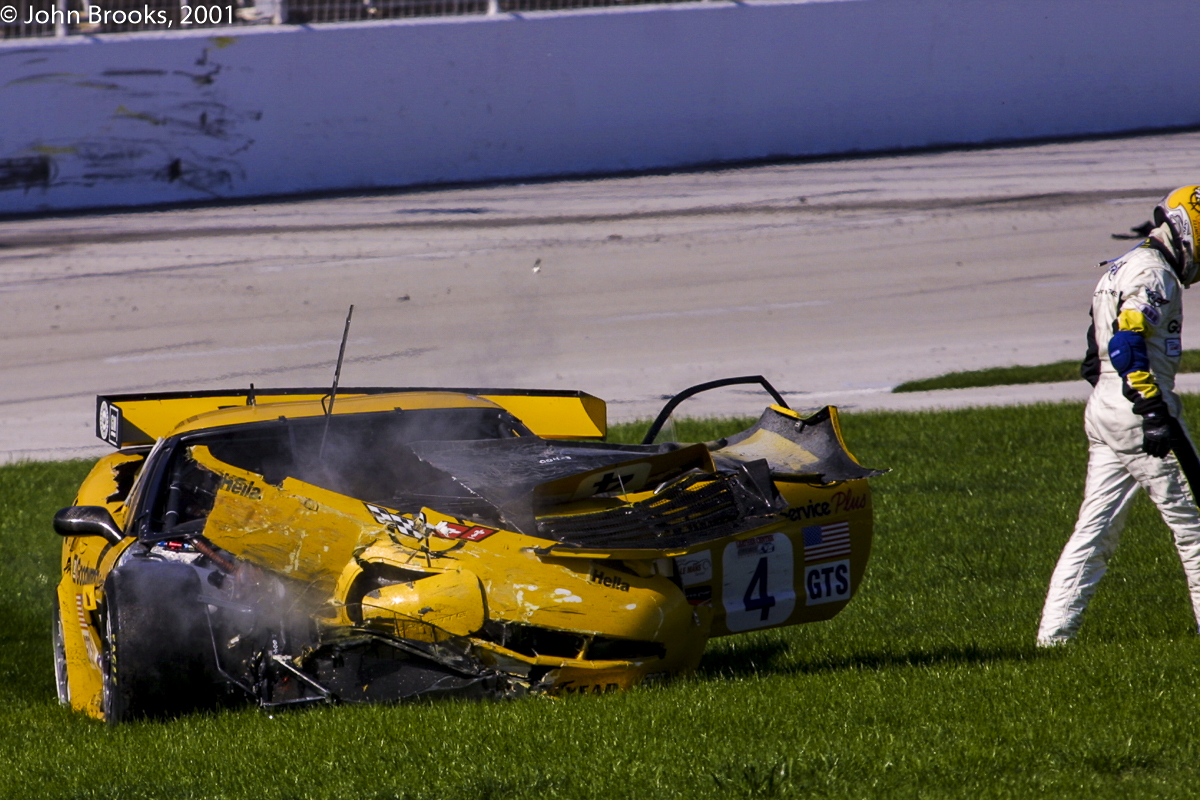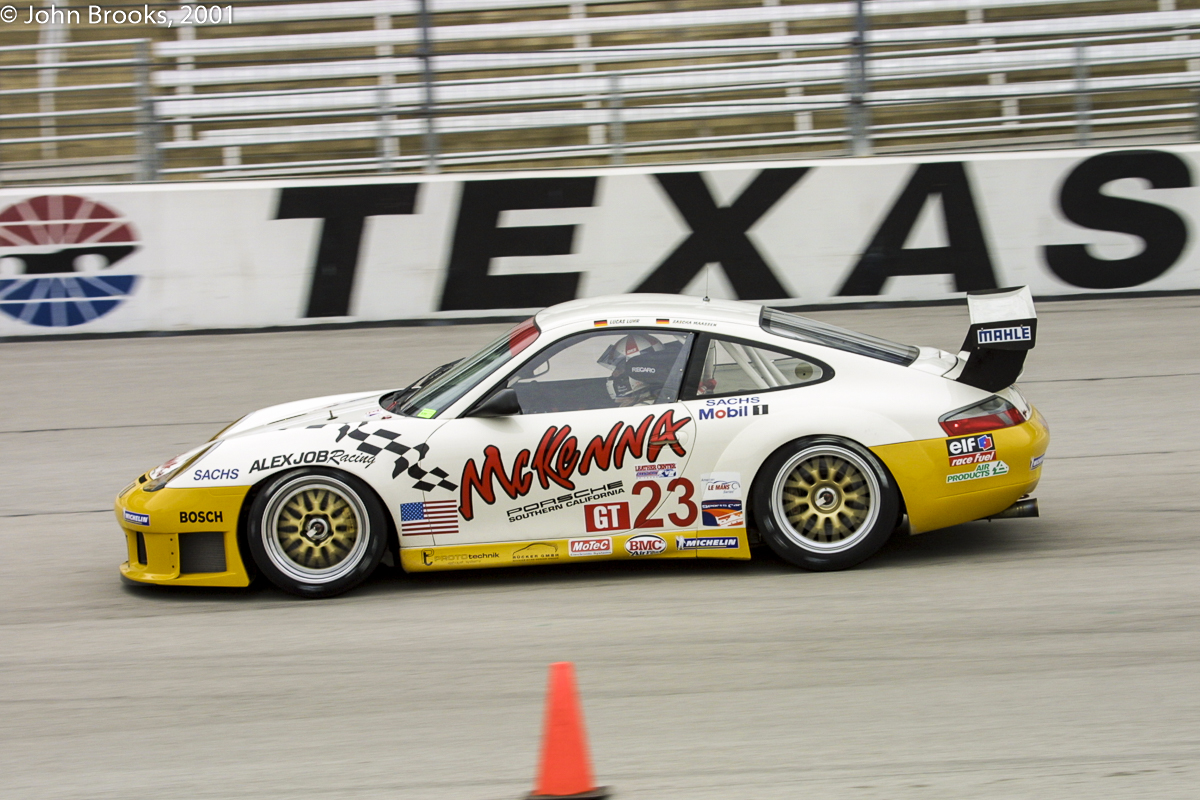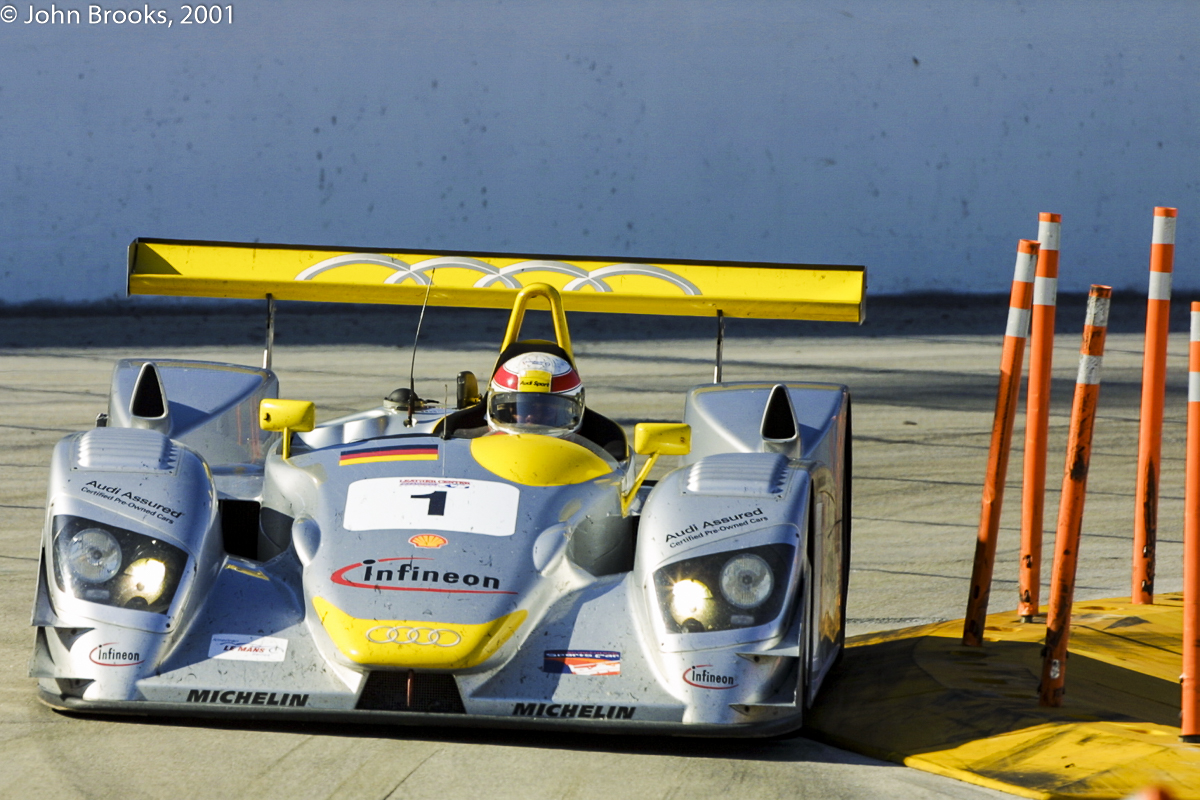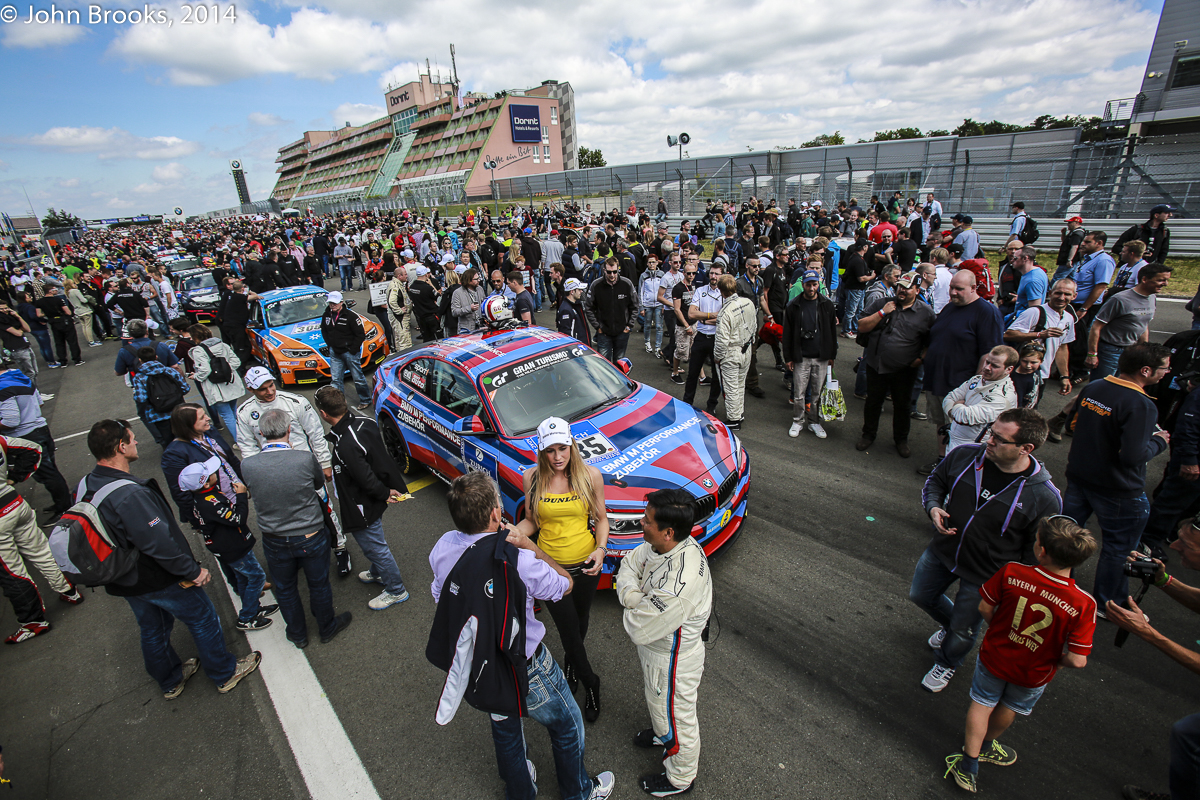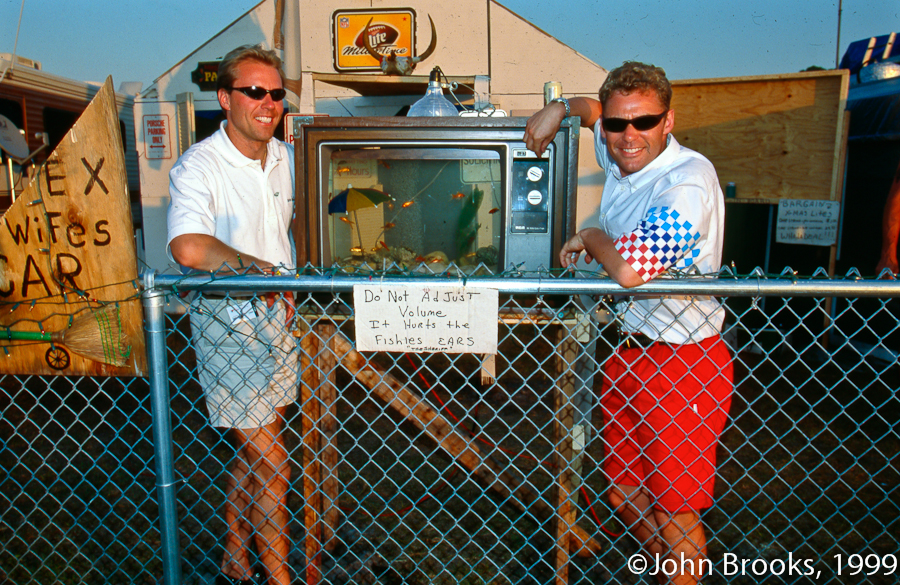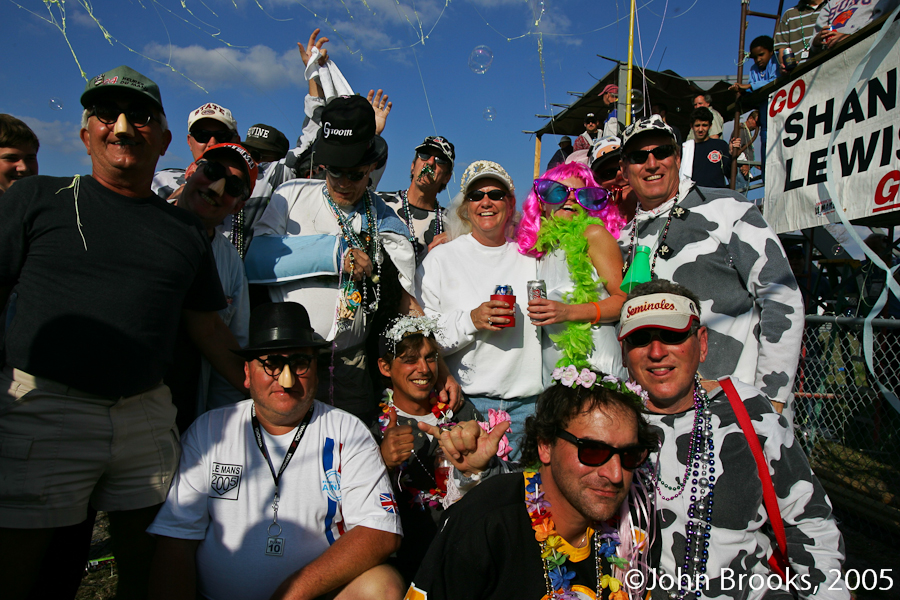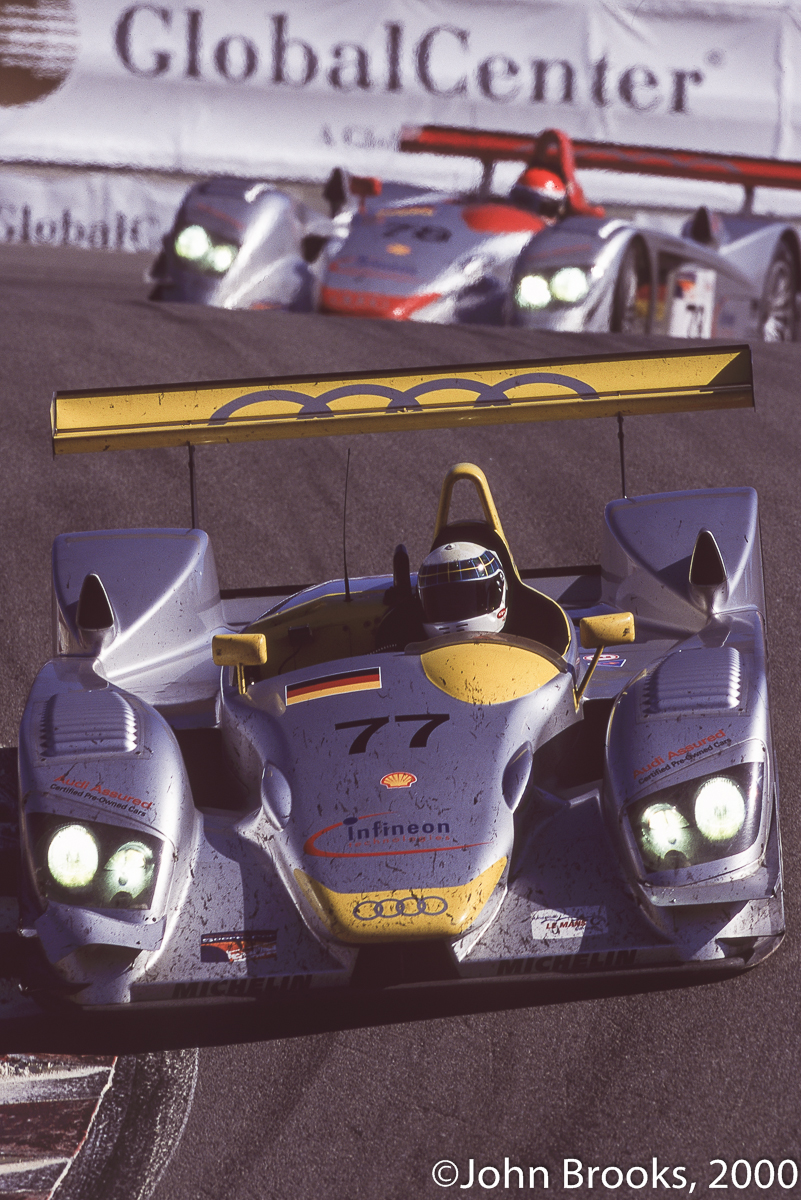The last visit to the territory of NoRight was for the first American Le Mans Series round of 2001. Arriving from the wintery UK and expecting a repeat of the sweltering heat previously encountered in September I got a shock. The conditions in Texas during March were more Donington than Dallas, damp, cold and grey.
The series had lost the Vipers of ORECA, the BMW V12 LMR had retired and Schnitzer now had M3s to join PTG in the fight with the Porsches for the GT class. Overall the numbers were down, 34 entries had participated at Las Vegas, here in Texas four months later that was reduced to 22. Certainly the grid was not helped by the competition at Grand-Am who had 35 cars turn up at Homestead the same weekend. A big incentive was not having to take on the Audis or the Panoz, Dyson Racing could bring along the Riley & Scott to win, that would have been unthinkable in Texas. The vastness of the Texas Motor Speedway and the reduced car count gave a feeling that the ALMS was somehow losing momentum, in danger, perhaps, of stalling.
On a positive note Champion Racing had acquired an R8 to give the Joest pair a run for their money, though they would take some time to get up to speed, including drivers who could take full advantage of the Audi’s potential performance.
Perhaps most importantly, at least it seemed that way at the time, there was a new Panoz, the LMP07. In addition Doctor Don put his hand into his pocket and ran a pair of the old LMP1 cars to pad out the field at the sharp end.
One thing that was familiar was the lack of a crowd and the lack of decent locations or backgrounds to execute my art…………..even the light deserted me until the race started.
I do recall a few things about the second ALMS race at Texas Motor Speedway. The Australian Grand Prix was also running that Saturday evening after the track action had finished, time zones are a wonderful thing. So we all got in our rental cars and drove 50 miles (all journeys in Dallas are 50 miles or more, it’s the Law) to a sports bar where the Grand Prix was being televised. I had just acquired my first digital camera; it was powerful Juju back then, the ability to see your work instantaneously, no waiting for the film processors to do their work. Instant gratification, how very 21st Century?
I was sitting with Dindo Capello and Michele Alboreto watching another dull Schumacher/Ferrari procession when I piped up.
“Dindo, did you damage the car today, during Qualifying?”
“What do you mean, damage?” said the completely innocent Italian, butter would not melt, his eyes showing the hurt he just endured when such an outrageous suggestion had been aired.
“When you hit the chicane and scattered the poles”
“No, no that was not me”
“Well, how do you explain this?”
I flicked the back of the camera to show cart wheeling poles from the chicane that Dindo had driven over. It was a magic show, that Michele had been keenly observing as Dindo squirmed, his mistake now public.
Michele seized the moment, grabbed the camera and got all the Audi crew to see the evidence of his friend’s indiscretion. I recall it cost Dindo a round of drinks. From that point on Michele and I got on like a house on fire.
Another new car making its début in Texas was the Callaway C-12 R, it was a handsome beast even if the results never reflected the potential.
In real terms the race was largely settled before it began, the Pirro/Biela R8 had its pole position time disallowed as their Audi’s rear diffuser was 2mm higher than the rules allowed, so they would start at the back of the field. Dindo Capello led away at the Green Flag, he was joined in the Audi for 2001 by Tom Kristensen as Allan McNish had jumped ship to Toyota in preparation for their 2002 Formula One campaign.
Most cars start slowly and develop but the LMP07 went the other way. The race at Texas was the only time that it looked like a winner, a late race stop for fuel denying a début win for Brabham and Magnussen, thereafter it was a dog. The team dropped the car after Le Mans, reverting to the trusty LMP1, a decision justified with victories at Portland and Mid-Ohio.
Kelly Collins had a massive crash in the factory Corvette after a puncture, he was lucky to walk away after the heavy impact. The guys at Pratt & Miller faced some sleepless nights to get a new car built up for Sebring less than a fortnight later.
GT was the property of Alex Job Racing with the paring of Lucas Luhr and Sascha Maassen overcoming the BMW challenge.
Tom Kristensen brought his R8 home for yet another Audi 1-2 and the Panoz was third. Once more the crowds stayed away in droves missing another good battle and a tight finish. Plans to run again at Charlotte late in 2001 were quietly dropped and that was the end of the Roval experiment. And yet the ALMS had not finished with stadiums as we shall see in Part Four.
What went wrong? Why did ‘Takin’ It to the Streets’ not work? I can offer some thoughts………….
Simply that sportscar races held on these hybrid tracks were artificial, driven by TV and marketing demographics, planned by those who had little feel for what they were doing. We would all show up with the “Hey another day at the office attitude” and none of the anticipation that the mention of Le Mans or Nordschleife or Spa brings. Sportscar fans are usually amongst the sharper knives in the block and even the dumber ones could sense that this was ersatz racing, endurance lite and avoided it like the plague. If the real fans did not care why should casual spectators spend their time and money?
This failure and the failure of street events such as Miami and Washington (for different reasons) pose a question. Is there a future for sportscars given the need to increase attendances to get greater coverage, to get more sponsorship $$$, to get greater coverage? Or should we just give up and admit that F1 and NASCAR have sucked the life out of the sport below their Augean stables? Perhaps the answer lies with a different question. Instead of chasing new markets should we not just consolidate our existing strengths and concentrate on improving the show……….sort of “Build it and they will come” philosophy?
Well the numbers that attend Le Mans and the other classics attest to the popularity of the endurance form of racing……sometimes. There are many who would no more stop breathing than fail to turn up at their favourite event be it La Sarthe or Sebring; these folks would no more go to a Grand Prix or Daytona 500 than fly to the moon. Some of the more extreme cases plot their trips throughout the year and there are many websites run by the fans for the fans. Even the absence of a historical lineage is no obstacle to success as the instant classic status of Petit Le Mans proves.
Maybe that is it, in this age of hundreds of cable channels, the internet and all day drinking hours, for us to get off our backsides and go to a race meeting without the incentive of making a buck, requires that the venue/event has a sense of occasion, a promise of a place in history ……….most of us Sartheophiles reference our personal index of the years by the who-what-why of 24 hours between 3.00 pm on two days in June. I suspect the same is true of the guys on Sebring’s Turn 10, even for the most part, like the 60’s, if you can remember it you weren’t there.
Our fables are not of dragons and wizards but of Ickx in 1969 or 1977 or Andretti in 1970 or of Pedro and Seppi just about all the time. In an age when almost everything is pyrite to find the genuine article is exciting and precious, so seeing a McNish or a Lotterer on a charge is the real deal but only given the right setting.
It would seem that the best hope for the healthy future is to learn from the past, successes as well as failures and go for fewer “classic” events at the remaining few real tracks. Quality over quantity……..F1 and NASCAR are on the opposite course, so that’s proof enough for me.
LMES…….this could be the start of a beautiful friendship.
John Brooks December 2004
Excuse some of those conclusions, hindsight is a wonderful thing or a complete embarrassment. The answer would appear to be the FIA World Endurance Championship……………..
More in the final part.
John Brooks, December 2014

